


The Division of the Chemistry of Construction Materials of the German Chemical Society awards the Hans Kühl Medal at irregular intervals to personalities
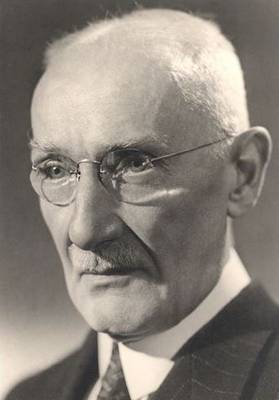
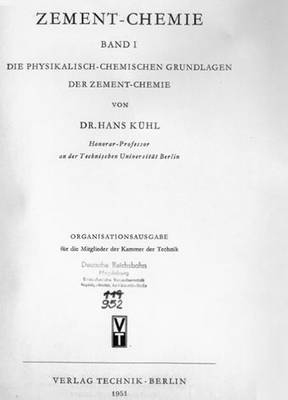
The chemist Prof. Dr. phil. Hans Kühl (1879 - 1969) was a pioneer in cement chemistry and building material technology. The Division Board chose him as the namesake for the award because of his pioneering scientific work and his exemplary personality. In the following the life, work and personality of this nestor of cement and silicate chemistry are described.
Prof. Hans Kühl was born on February 11, 1879 as the son of a farmer in Karlsruhe (Schleswig-Holstein). After graduating from secondary school in Flensburg in 1898, he devoted himself to studying chemistry at the Universities of Freiburg, Kiel and Leipzig. There he was particularly fascinated by the lectures and work of the physical chemists Wilhelm Ostwald and Max Bodenstein, whose pupils he felt himself to be all his life. In 1903 he received his doctorate as Dr. phil. with a dissertation on the kinetics of carbon monoxide with the predicate "summa cum laude".
After working as an assistant at Bodenstein, his entry into the chemical-technical research institute of Dr. Hermann Passow (a cement expert who was well known at the time alongside Michaelis and Schott) in Blankenese (1905). It was there that Kühl made his first invention by making cement from blast furnace slag. In 1907, the only 28-year-old Kühl moved to Berlin-Lichterfelde and took over the famous cement and mortar technology institute from Dr. Wilhelm Michaelis, the most important German cement technologist of the time.
Scientists and practitioners
In 1922, the Lichterfeld Institute is affiliated with the Technical University of Berlin. Kühl becomes a lecturer at the Technical University of Berlin and in 1925 honorary professor. From then on, he worked here as a teacher and researcher in cement chemistry, well-known far beyond the borders of the country. The milestones of his scientific work are the introduction of the terms "silicate" and "clay module" in 1913 and 1926, respectively. His "Kalkstandard" (1933) contrasts Michaelis' empirical "hydraulic module" with the scientifically precisely calculated amount of lime, which is the hydraulic factors can bind. In 1924, Kühl invented Bauxitland cement (also known as ?Kühl? cement) and dealt with problems of grinding fineness. Of his numerous patents, only those for the production of sulphate slag cement (1909) and for the introduction of sludge in rotary kilns (1911) are mentioned. In the course of the decades more than 400 technical and scientific publications were created in German, English, French, Italian, Russian and Spanish, testimony to his extensive research work and his never tiring diligence. In addition to topic-specific work, Kühl repeatedly publishes detailed overview articles that reflect the state of knowledge at the time
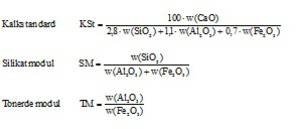
Characterization of the raw meal composition of cement according to Hans Kühl
Describe fundamental aspects of cement and building material technology and show connections. This not only shows the excellent specialist, but also the gifted teacher Kühl. Examples are the articles "Basics and history of the hardening theory of mortars" and "50 years of cement chemistry in theory and practice", both published in 1951 in the magazine "Silikattechnik".
Text: Prof. Dr. Johann Plank
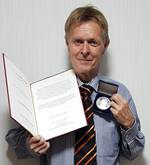
The Hans Kühl Medal is awarded to Dr. Gerhard Albrecht (Kobe, Japan) in recognition of his outstanding achievements in the development of highly innovative concrete admixtures, including vinyl ether-based PCEs, which represent a unique selling point for BASF worldwide, and a completely new type of cement accelerator (CSH-PCE) based on nucleation seeding. Such admixtures will play a decisive and outstanding role in the introduction and distribution of CO2-reduced cements in the future. As the long-standing Head of central development for concrete admixtures at SKW/Degussa/BASF, Dr. Albrecht has had a decisive influence on global concrete technology with important inventions and patents and has taken it to new dimensions.
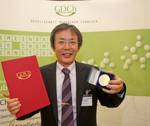
Dr. Tsuyoshi Hirata
Nippon Shokubai, Japan
Invention of PCE flow agent
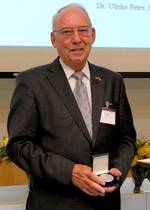
Dr. Hugo Rietveld
Energy Research Foundation ECN, The Netherlands
Refinement strategies for X-ray and neutron data
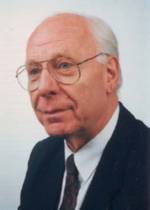
Prof. Dr. Wolfgang Wieker
GNF eV, Berlin
Basic research on chemistry of construction materials
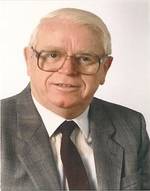
Dr. Michael Roth
Wacker Chemie, Burghausen
Invention of silicone resin paints and waterproofing agents
| Year | Theme | awardee |
|---|---|---|
| 2020 | Development of highly innovative concrete admixtures | Dr. Gerhard Albrecht, Kobe, Japan |
| 2013 | Invention PCE flow agent | Dr. Tsuyoshi Hirata, Nippon Shokubai, Japan |
| 2010 | Refinement strategies for X-ray and neutron data | Dr. Hugo Rietveld, Energy Research Foundation ECN, The Netherlands |
| 2006 | Basic research on chemistry of construction materials | Prof. Dr. Wolfgang Wieker, GNF eV, Berlin |
| 2005 | Basic research on chemistry of construction materials |
Prof. Dr. Otto Henning, Weimar University of Architecture and Civil Engineering Prof. Dr. Dietbert Knöfel, University of Siegen |
| 2004 | Invention of silicone resin paints and Hydrophobic agents |
Dr. Michael Roth, Wacker Chemie, Burghausen |
| 2003 | Invention of flow agents |
Dr. Alois Aignesberger, SKW Trostberg Dr. Kenichi Hattori, Kao Soap, Japan |
This page has been machine translated. If you have any feedback or comments please feel free to contact us. 
last modified: 21.07.2025 16:59 H from Translator